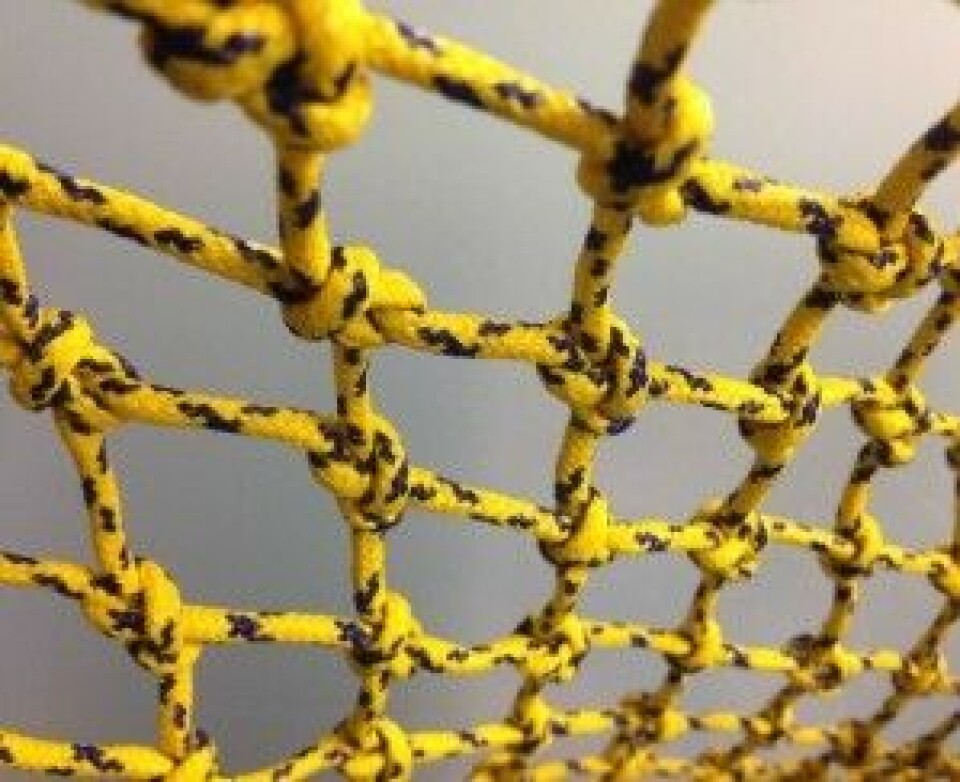
New fish farm nets show promise
The only escape incident of any significance that Marine harvest has experienced during the past number of years was due to an anchor slippage and the subsequent submerged net pen, but the threat is always there that damage to nets can cause fish to escape. And while the escape of over a million farmed Atlantic salmon in the B.C./Washington State area since farming of the fish began in the late 1980’s, no self-sustainable populations have been found, and there is no evidence of cross-breeding with the genetically different five Pacific salmon species. But conventional nylon nets do require a fair amount of maintenance due to fouling with naturally occurring organisms. One single net can incur washing/treatment costs well of over CAD$ 12,000 (~€ 9,000) per year.
But as James Gaskill, Production Director for Marine Harvest Canada explains, there seems to be another solution out there;
After 25+ years, say good-bye to single nylon nets. These nets have served the industry for a long time but in order for us to be a more modern and progressive salmon farming company we are moving on. The nets of old bring to mind the term “net pens” which conjures up the image of something not as substantial as we’d like it to be. We are now in the age of sea cages where we require more protection, more resilience and more longevity. Our quest for an improved net began almost four years ago when we realized that what we were using had to change. We needed three things: a new design, a new material, and redundancy.
As always, through trial and error, and through input from managers and staff alike we came up with a hybrid design. Hybrid because it incorporates the function of a main net and also provides predator protection. However, the development did not stop there – we soon discovered that we needed a material that would not stretch, shrink, nor lose its strength over time. Our answer came through a suggestion from our purchasing staff: why not use HDPE (high density polyethylene) netting? It is the product of choice for the trawling industry around the world. It had the criteria we were looking for and the added benefit of having a low drag in the water (very slippery) and having a high abrasion resistance. Once we had a base design and the correct material the newly formed Net Committee went to work refining the design and setting specifications.
The first design was installed at Phillips Arm farm (East coast of Vancouver Island) where it has just been removed after all its fish were harvested. According to the manager and staff, the net performed well having been effective against predators and nearly as clean when it came out as when it went in. Similar nets of different material weights are being trialed at Mahatta East site (West coast of Vancouver Island) where they have outperformed three other materials (including nylon) in a four way net trial. The last key in the cog was even greater added redundancy that would further protect against predators, the potential for escape, or damage by driftwood. So, we decided to build full site predator nets from the same HDPE material – we have Dean Trethewey to thank for much of the design work. At the end of last year and the beginning of this year the management and staff of Quatsino and Port Hardy worked their butts off to install six full site predator nets which have been tremendously effective to date.
And so what’s the plan? In January it was decided that over the next 2+ years we will: replace all aging nylon nets and any prior copper dipped nets with our new hybrid HDPE nets, and that 100% of cages will include predator nets. It will be an investment of several million dollars, but a necessary and responsible one. So if you’re out and about and see the funky purple or yellow nets, you’ll know the paradigm shift has begun.






















































